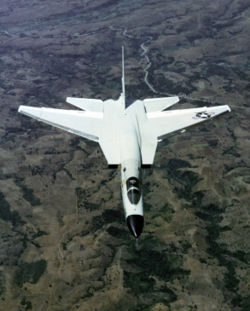During the Cold War, the confrontation between the United States and the Soviet Union extended beyond political and economic fronts, reaching into the skies where the most advanced aircraft were deployed to safeguard national interests. One of the key aircraft in this confrontation was the North American A-5 Vigilante, a symbol of the United States Air Force’s power.
Development History and the Birth of the A-5
In the 1950s, the U.S. Air Force recognized the urgent need to develop a strategic bomber capable of carrying nuclear weapons, flying faster than the speed of sound, and performing long-range strike missions. North American Aviation, the company already famous for aircraft like the P-51 Mustang and the F-86 Sabre, was tasked with developing this new bomber.
The result of this development was the North American A-5, initially designated the A3J-1 before being renamed the A-5 when it officially entered service. The A-5 was not just a bomber; it was a product of significant advancements in aviation technology, featuring many cutting-edge innovations for its time.

Advanced Design and Features
The A-5 Vigilante stood out with its sleek aerodynamic design, allowing it to reach a maximum speed of Mach 2 (approximately 2,450 km/h). With a long fuselage and folding wings, the A-5 was designed for effective operation both on aircraft carriers and in the air.
One of the A-5’s unique features was its innovative weapons system. Initially designed to carry a nuclear bomb in a weapons bay located behind the cockpit, the system used a “tandem weapon ejection system” to release the bomb from the rear of the aircraft, minimizing collision risk and maximizing pilot survival chances.
Additionally, the A-5 was equipped with advanced radar and modern weapons control systems, enabling it to perform reconnaissance and precision strike missions in all weather conditions. These features made the A-5 one of the most formidable bombers of the U.S. during the Cold War era.

Role and Missions During the Cold War
Although the A-5 was designed for nuclear bombing missions, it was primarily used for reconnaissance and precision strike missions during the Cold War. With its long-range capability and advanced reconnaissance equipment, the A-5 conducted many important missions, gathering intelligence from key Soviet and adversary targets.
The A-5 also proved its value during the Vietnam War, where it was used in tactical reconnaissance missions, helping the U.S. military identify enemy positions and supporting airstrikes.
Legacy of the North American A-5
Although only a limited number of North American A-5s were produced, and they were eventually retired in the 1970s, the aircraft left an important legacy in military aviation history. The design and technology of the A-5 paved the way for the development of later U.S. reconnaissance and strategic bombers, such as the F-111 Aardvark and B-1 Lancer.
Today, the remaining A-5 Vigilantes are treasured artifacts in aviation museums, where they are preserved as symbols of an important era in U.S. military history.

Conclusion
The North American A-5 Vigilante was not just a strategic bomber; it was also a symbol of technological advancement and military power for the United States during the Cold War. With its advanced design and outstanding performance in reconnaissance and strike missions, the A-5 deserves to be remembered as one of the most respected combat aircraft in military aviation history.





